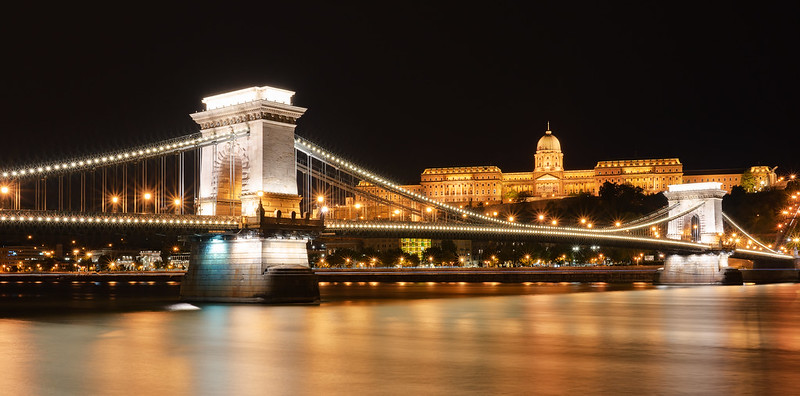Budapest: An Architectural Odyssey Through Time
From Roman Foundations to Modern Marvels
Budapest, often referred to as the “Pearl of the Danube,” stands as a testament to the myriad of civilizations and cultures that have influenced its landscape. With a rich tapestry of architectural styles, the city offers a visual journey from the ancient times to the contemporary era.

Aquincum: The Roman Legacy
The ancient Roman city of Aquincum, nestled in Óbuda (District III), serves as a foundational stone in Budapest’s architectural journey. Established around 89 AD, Aquincum stands as a silent witness to the city’s Roman past. Its ruins, which include remnants of amphitheaters, temples, and bathhouses, provide a glimpse into the life and times of Roman-era Hungary.

Aquincum: The main archaeological site in Óbuda (District III) which includes remnants of amphitheaters, temples, and bathhouses.
Gothic Grandeur and Its Neo-Gothic Revival
The Gothic era left an indelible mark on Budapest’s skyline. The Castle District, with its cobbled streets and medieval charm, houses structures that echo the Gothic architectural style. Buildings on Országház Street, dating back to the 14th century, and the 15th-century Mary Magdalene Church, are prime examples. Fast forward to more recent times, and we see the Neo-Gothic splendor of landmarks like the Hungarian Parliament Building and the Matthias Church. These structures, while built much later, pay homage to the Gothic style, blending history with modernity.

- Castle District Buildings: Specifically, structures on Országház Street from the 14th century.
- Mary Magdalene Church: A 15th-century church.
- Hungarian Parliament Building: A Neo-Gothic marvel that stands as one of the city’s most iconic landmarks.
- Matthias Church: Originally built in Romanesque style, it was later renovated in a Neo-Gothic style.
Renaissance Resurgence
The Renaissance, a period of artistic and architectural revival, found its way to Budapest following the 1476 marriage of King Matthias Corvinus to Beatrice of Naples. This union brought with it Italian artisans and craftsmen, leading to a flourish of Renaissance architecture in the city. Today, structures like the Hungarian State Opera House, St. Stephen’s Basilica, and the Hungarian Academy of Sciences stand as testaments to this period, showcasing intricate designs and artistic brilliance.

- Hungarian State Opera House: A prime example of Renaissance architecture in Budapest.
- St. Stephen’s Basilica: A religious structure showcasing the intricacies of the Renaissance style.
- Hungarian Academy of Sciences: Another testament to the Renaissance architectural influence in the city.
Echoes of the Ottoman Era
The Turkish occupation, spanning from 1541 to 1686, introduced Budapest to Islamic architecture. This period saw the construction of numerous mosques and baths, reflecting Ottoman architectural prowess. While many of these structures were later converted to churches and other buildings, some, like the Rudas Baths and Király Baths, remain operational. They serve as a reminder of the city’s Ottoman past and its rich tapestry of cultural influences.

- Rudas Baths: A still-operational bathhouse from the Ottoman period.
- Király Baths: Another bathhouse reflecting the architectural style of the Ottoman era.
Baroque Brilliance
The Baroque era, characterized by grandeur and opulence, has left a lasting legacy in Budapest. The Church of St. Anna, with its intricate designs, and the Buda Royal Palace in the Castle District, are shining examples of Baroque architecture. These structures, with their ornate facades and lavish interiors, reflect the artistic sensibilities of the period.

- Church of St. Anna: A prime example of Baroque architecture with its intricate designs.
- Buda Royal Palace: Located in the Castle District, it’s a significant representation of the Baroque era.
Classic and Neoclassic Elegance
The Classic and Neoclassic architectural styles brought a sense of symmetry and proportion to Budapest’s buildings. Renowned architects like Mihály Pollack and József Hild designed iconic structures, including the Hungarian National Museum and the Széchenyi Chain Bridge, during this period. These buildings, with their balanced designs and aesthetic appeal, add to Budapest’s architectural diversity.

- Hungarian National Museum: A structure that showcases the Classic architectural style.
- Széchenyi Chain Bridge: A bridge that stands as a testament to the Neoclassic architectural influence.
Art Nouveau: A Blend of Tradition and Modernity
The turn of the 20th century saw Budapest embrace Art Nouveau, a style characterized by organic forms and intricate patterns. The Museum of Applied Arts, with its flowing designs, and the Gresham Palace, a symbol of luxury, are prime examples. This architectural style, while modern in its approach, often drew inspiration from traditional Hungarian motifs, creating a blend that was both unique and visually stunning.

- Museum of Applied Arts: An Art Nouveau structure known for its intricate designs and patterns.
- Gresham Palace: A luxury building reflecting the Art Nouveau style.
Modernism and the Contemporary Era
The 20th and 21st centuries brought with them new architectural challenges and innovations. While the communist regime saw the rise of panelház (blocks of flats), the contemporary era has been marked by a balance between preserving Budapest’s architectural heritage and embracing modern designs. Landmarks like the National Theatre and the Palace of Arts showcase the city’s commitment to architectural excellence in the modern era.

- National Theatre: A modern architectural marvel that showcases contemporary design elements.
- Palace of Arts: A symbol of modern architectural excellence in Budapest.
In Conclusion
Budapest’s architecture is a reflection of its rich history, diverse influences, and the city’s continuous evolution. Each era, each style, tells a story – of empires, cultures, and the indomitable spirit of the city and its people. As one traverses the streets of Budapest, they embark on an architectural odyssey, witnessing the passage of time etched in stone and mortar.